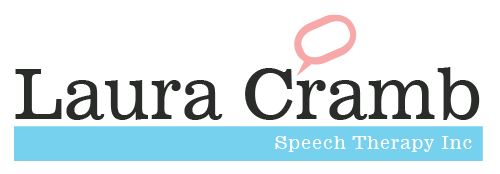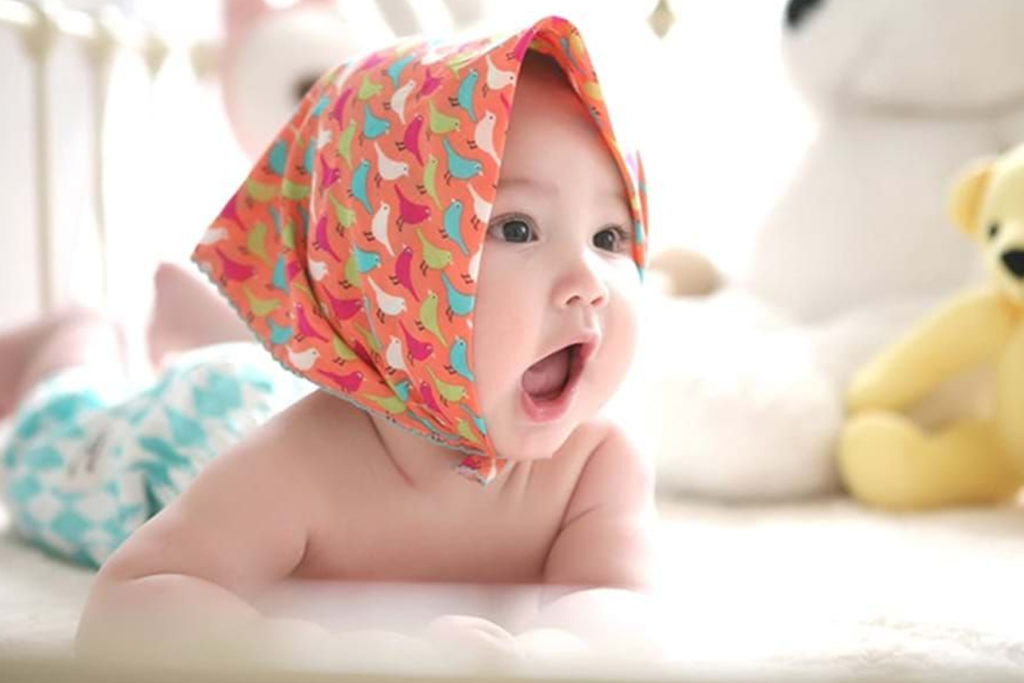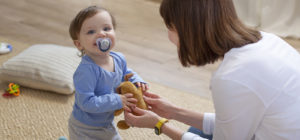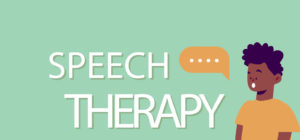There are lots of activities parents and carers can do to stimulate and encourage speech and language development.
We recommend you speak to your child’s speech and language therapist if you have any questions or concerns regarding any of the following information.
There are a number of stages children pass through as they develop their speech and language skills in the first year. The ages given are meant only as a rough guide.
Stage 1 (0-6 months)
Understanding
Your baby starts to understand speech even before they begin to speak. From a very early age, they will be interested in looking at your face and listening to your voice. At about two to four months, your baby will begin to respond to the different tones that you may use.
For example, they may cry if you raise yur voice or may laugh or gurgle excitedly if you make a word or sound that they find funny.
Talking
Early sounds and noises
From birth, your baby will make a range of noises which will mean something to you – for example, that they are hungry or in pain. These noises include crying, coughing and sounds made while breathing.
During feeding, your baby will also make sucking, burping and quiet low-pitched contented sounds. Crying and making noises are important as this is how your baby learns to control the air that comes from their lungs and use their vocal cords. It lays the foundation for speaking.
Cooing
To start with, your baby will still use crying as their main means of communicating with you, but will then start to extend his range of sounds. This is when your baby starts to make ‘cooing’ noises which develop alongside crying.
There is a great variation in the types of sounds made. As time moves on, your baby will use crying less often to communicate and you will also notice a reduction in the first early noises they made. Your baby will start to make sounds more like ooh’ and ‘aah’ and may even play at making sounds with their lips.
Your baby will also start to smile at you and wait for you to respond and they will probably smile back at you. They may even imitate your facial expressions – for example, copying you when you stick out your tongue.
The cooing stage is important as this is the time when your baby starts to develop control of the muscles needed for talking.
Vocal play
Later on during this stage, your baby will start to coo less and begin to experiment with repeating a wider range of sounds. Your baby will also make ‘bubbly’ sounds in which their tongue makes contact with the lips, and ‘raspberry’ sounds, in which their lips are placed together and vibrate.
They will start to imitate sounds and intonation (the up and down tunes in speech) and will begin to recognise and respond to their name being called.
Stage 2 (6-12 months)
Understanding
By six to nine months, your baby will start to recognise the use of certain phrases in context. For example, when you say ‘bye-bye’, your baby might wave. Around this time, your baby will also start to turn to familiar voices across a room and will probably begin to respond to his or her own name.
Towards the end of the first year, your baby will have built up a small vocabulary of words that they understand. It is important to remember that this often occurs even before your baby says their first word.
Talking
Babbling
Your baby will combine sounds into longer sequences. They may combine vowels like ‘ah’ with consonant-type or hard sounds like ‘d’. They may make single sounds initially or repeat some sounds such as ‘dada, gaga’. The sounds may be made at the front of the mouth using the lips (‘mama, baba’) or they may be produced at the back of the mouth where the tongue touches the throat (‘kaka, gaga’).
At this stage, often your baby will enjoy repeating certain sounds over and over again. This is the beginnings of what is commonly called “babbling”, in which the sounds and intonation of your baby’s voice can be very tuneful and start to resemble speech.
Your baby may be more vocal when playing with an adult or another child, but you will also notice that they may make lots of sounds whilst playing alone, looking around at the world or trying to get your attention. At this stage, your baby will start to copy body movements – for example, clapping hands and copying speech sounds.
What you can do
Getting ready to play
You can play sound games at any time. It is generally best to try to cut down on background noise so that your baby can hear your voice. Also try to sit facing your baby so that they can clearly see your face and mouth.
Develop your baby’s listening skills
It is important for your baby to become “tuned into” the speech sounds and everyday sounds that they may hear. As your baby develops, they should not only turn but also search for the sound they hear. You could use soundmakers – for example, bells or hand claps.
When you know that your baby can hear sounds, start by making a sound in front of your baby so that they can see you. Then make the sound towards the left or the right of your baby. This will help them to develop the listening skills which are critical for speech development.
Expose your baby to sounds in the environment – for example, the door bell or the telephone ringing – and when your baby responds, say to them, for example, ‘that’s the doorbell!’
Talk to your baby
Even though your baby does not understand what you are saying, they will feel safe when they hear your calm and reassuring voice. Vary the volume and pitch of your voice too, as babies respond to high and soft voices. You don’t even need to use real words: have some fun with sounds!
Your baby may not copy these sounds straight away but will enjoy watching your mouth and face and hearing the sounds you make. Let your baby see and feel your mouth moving either with their hands or on their skin. For example, blow raspberries and let your baby touch your lips to feel the vibration.
Copy what your baby says
If your baby makes a certain sound or noise, copy the sound/noise and wait for your baby to make another. In this way, you are having a ‘baby conversation’ and teaching the concept of turn-taking.
Always make sure that you are looking at your baby and try not to interrupt. Make sure you use smiling and facial expressions during your ‘baby conversations’.
Respond to your baby’s cries
You can respond to your baby’s cries by touching and holding them or by singing and talking to them.
Teach your baby new words
When you are with your baby, name familiar objects/toys that your baby looks at or plays with. If your baby makes sounds while they are playing with a toy or looking at an object, imitate those sounds and interpret them by providing the name of the toy/object.
During everyday activities – for example, feeding, bathing, nappy changes – and during routines when your baby is with you, talk about what you or your baby are doing.
Expose your baby to different and new situations – for example, shopping trips, bus trips or even washing the dishes. These are great situations to teach new vocabulary.
Play
Give your baby things to feel and look at – for example, a baby mirror, a soft cuddly toy – and things to hold, shake and bang – for example, bells and bricks. Encourage them to follow toys with their eyes – for example, blow bubbles/balloons in front of them or use finger puppets.
You can also play hiding games with your baby: let a piece of tissue or scarf fall over your head or cover a toy and encourage your baby to pull it off. Play peek-a-boo games with your baby or try simple rhymes – for example, ‘Round and round the garden’, where they can anticipate an action or word eg “boo”.
Share books with your baby
Read and show your baby books with large, simple, colourful photographs.
Most importantly, HAVE FUN with your baby!




